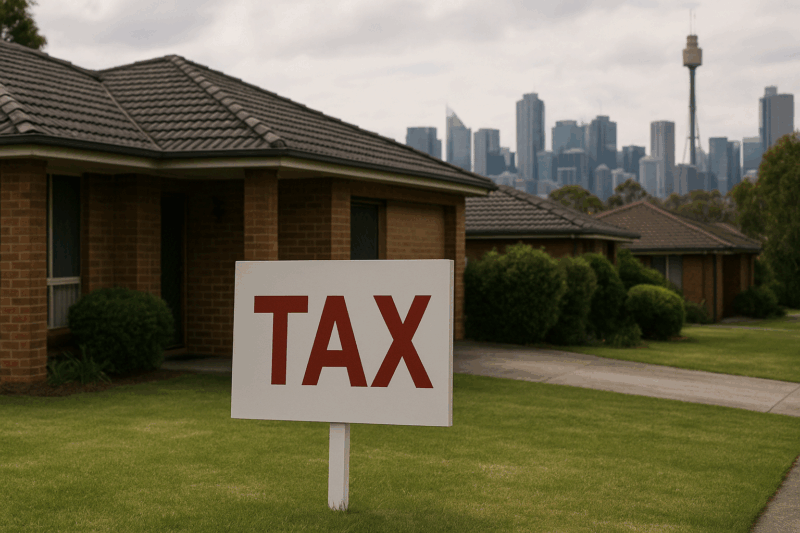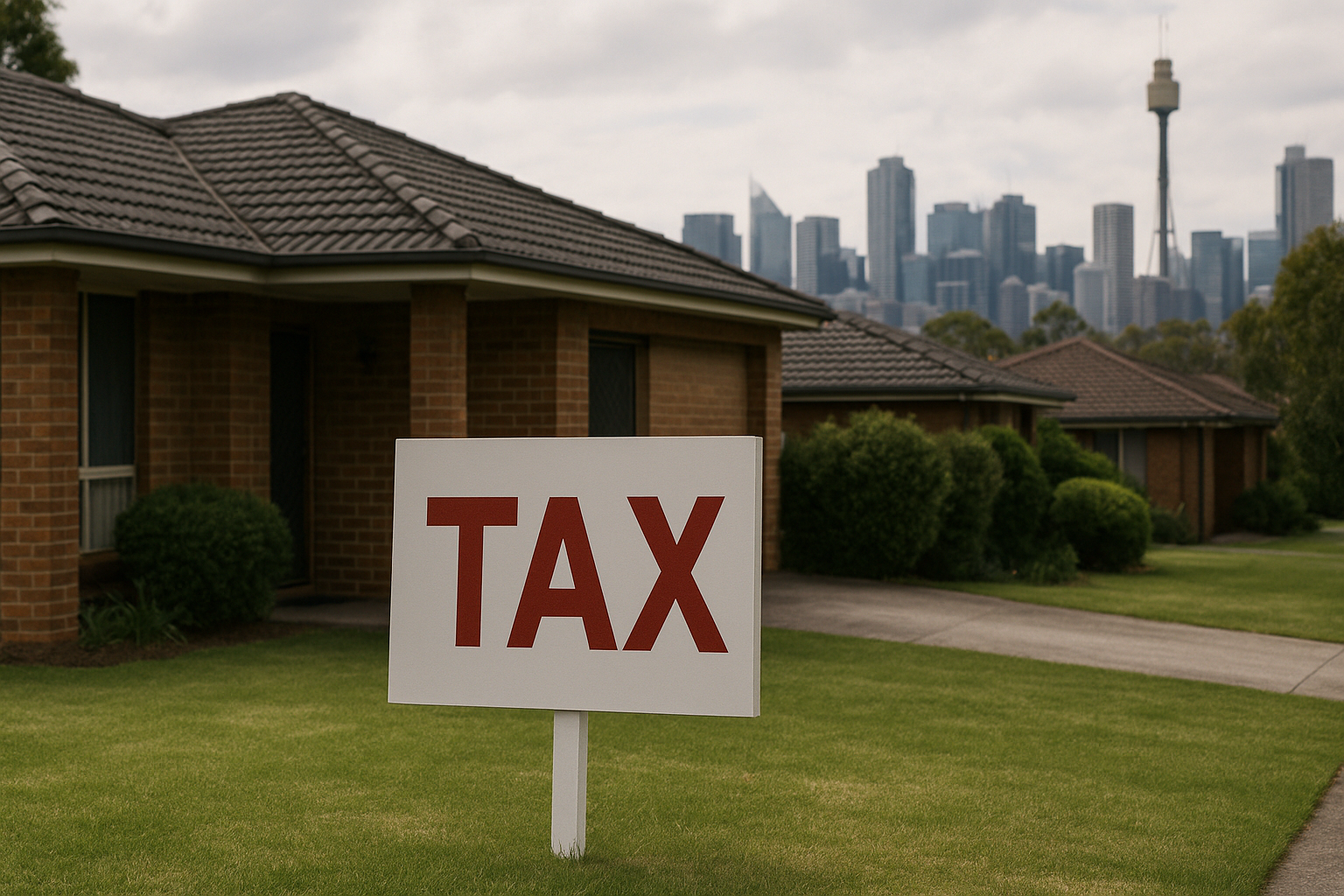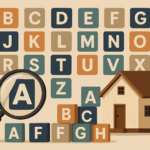
Key takeaways
Residential property isn’t just expensive because of land and construction costs, taxes make up nearly half the total cost of new housing in cities like Sydney, Melbourne, and Brisbane.
Taxes, levies, and regulatory charges ripple through to inflate the prices of both new and existing properties.
Property contributes up to 46% of state revenues, making it the government’s “golden goose.”
While unavoidable, the earlier investors adopt strategic structuring, the more wealth they preserve.
Property can either become a heavily taxed liability or, with planning, a powerful intergenerational wealth machine.
What if I told you that nearly half the cost of your next property isn’t the bricks, the land, or even the builder — but taxes?
That’s the hidden truth behind Australia’s housing market, and it’s crippling wealth creation for investors and homeowners alike.
Residential property may be the cornerstone of financial security for many Australians, but it’s also the government’s most lucrative tax base.
Between acquisition costs, ongoing levies, and exit taxes, residential property is Australia’s most heavily taxed asset class.
And the taxation story does not stop at construction - it continues relentlessly through ownership and eventual transferor sale.

The tax burden starts before you even get the keys
The Centre for International Economics (CIE), in a report for the Housing Industry Association, confirmed what many investors already know: residential property is Australia’s most heavily taxed asset class.
- In Sydney, the total outlay for a new house-and-land package in 2023–24 was estimated at $1.18 million.
- Nearly half of that : 49% or $576,000 , was eaten up by statutory taxes, regulatory costs, and infrastructure charges.
- Melbourne, Brisbane, and Adelaide aren’t far behind, with taxes ranging from 37% to 43%.
- Even apartments carry a tax bite of 30–38% of total costs.
However, there's a ripple effect - these taxes don’t just inflate the cost of new builds; they also push up the price of existing properties in the broader market.
The ongoing tax load: it doesn’t stop at settlement
Once you own the property, the taxman doesn’t quietly disappear.
Instead, a steady stream of levies, charges, and unrecoverable costs eats away at your returns year after year.
- Land Tax
Once thresholds are exceeded, land tax is unavoidable. On a $1.2m Sydney property, that’s $11,000–$15,000 every year, and it only climbs as values rise. - Income Tax on Rental Returns
A property generating $48,000 in annual rent (4% gross yield) may leave $30,000 net after expenses, assuming no mortgage expense. For a high-income earner, nearly half — $14,100 each year — disappears in income tax. - Capital Gains Tax (CGT)
Over 20 years, if the property doubles in value (a $1.2m gain), the CGT bill on disposal, even after the 50% discount, can still exceed $280,000, at the top marginal tax rate. - GST Leakage on Repairs & Expenses
Unlike commercial landlords, residential investors cannot recover GST on maintenance and other service fees and charges they pay e.g. letting fees, agency commissions, property inspection fees, repairs etc.
For example:
- $10,000 roof repair includes $909 in unrecoverable GST.
- Annual strata levies and management fees similarly include GST with no input tax credit.
Over 20 years, this leakage can total approximately $18,000 and in some cases much moreGST. Over 20 years, the leakage could easily exceed $18,000. - Cascading Taxes
Land taxes are calculated on inflated values, while GST applies to costs already embedded with other taxes, a compounding effect that magnifies the burden.
And don’t forget stamp duty: on a $1.2m property, that’s up to $66,000 every time you buy. If you move twice in 20 years, that’s another $132,000 gone.
These numbers are staggering for an investment or owner-occupied property.
A 20-year case study: the staggering cost of ownership
Scenario A:
Let’s take a high-income earner who buys a $1.2m Sydney property in their personal name and holds it for 20 years - and let's assume there is no debt on this property.
- Purchase price: $1.2m (includes ~$576k tax/regulatory imposts).
- Annual land tax: $11k × 20 years = $220k. Assumes no threshold is available
- Net rent after expenses: $30k × 20 years = $600k, taxed at 47% = $282k.
- GST leakage on repairs/strata: $18k.
- Capital Gain: $1.2m gain → taxable gain $600k → CGT $282k.
Total tax leakage ≈ $802k (excluding initial embedded taxes).
Scenario B:
Now compare that to owning the same property in an SMSF in pension phase (again assuming no debt.)
- Purchase price: $1.2m.
- Annual land tax: could be nil if within the thresholds and held in the SMSF.
- Net rent: $600k taxed at 0% = $0.
- GST leakage: $18k.
- Capital Gain: Exempt in pension phase = $0.
Total tax leakage ≈ $18k.
The Outcome:
That’s a difference of more than $780,000, enough to change your retirement dramatically.
Strategic options to minimise the tax burden
While you can’t avoid taxes altogether, smart structuring and planning can transform your results.
Of course at the top of the list is buying the right property - an investment grade property.
Then…
Choose the Right Ownership Structure
- Trusts: Offer income distribution flexibility, asset protection, and succession planning
- SMSFs: Provide concessional tax rates of 15% or even 0% in your retirement phase (this is general advice only).
- Companies: Fixed tax rate of 25–30%, though no CGT discount applies.
Optimise Your Debt
Use gearing strategically to maximise deductions and reduce taxable income. Equity recycling can convert non-deductible personal debt into deductible investment debt, thereby improving after-tax outcomes.
Plan for CGT
Time disposals in lower-income years, use the main residence exemption where possible, and consider pre-sale restructuring (e.g. spousal transfers) to optimise concessions.
Build Succession and Estate Structures
Testamentary trusts, staged gifting, or unit trusts can spread gains and protect intergenerational wealth without triggering unnecessary CGT or stamp duty.
Diversify Across Jurisdictions
Different states have different thresholds for land tax and stamp duty. Spreading your portfolio can help minimise the cumulative burden.
The bottom line: structure early, save massively
Residential property is not just a home or an investment, it’s also the government’s golden goose, contributing up to 46% of state revenue each year.
But here’s the good news: by acting early with intelligent structuring, you can turn property from a heavily taxed liability into a true intergenerational wealth-building machine.
The earlier you act, the more wealth you’ll keep, and the more your family will thank you.
Note: This is general advice only and should not be acted on without receiving specific advice taking your personal circumstances into account.














